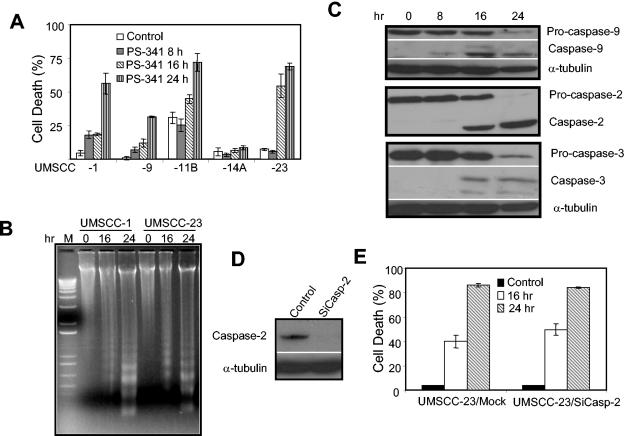FIG. 1.
PS-341 induces caspase activation and apoptosis in HNSCC cells. (A) HNSCC cell lines UMSCC-1, -9, -11B, -14A, and -23 were treated with PS-341 (0.5 μM) for 0, 8, 16, or 24 h. Cell viability was determined by trypan blue exclusion assay. The assays were performed with triplicate samples, and the results are representative of three independent experiments. Error bars depict standard deviations. (B) UMSCC-1 and UMSCC-23 cells were treated with PS-341 for 0, 16 or 24 h. The detached and attached cells were collected, and genomic DNA was extracted with phenol-chloroform. Genomic DNA was separated on a 1.2% agarose gel. (C) UMSCC-23 cells were treated with PS-341 for 0, 8, 16 or 24 h. The whole-cell extracts were prepared with RIPA buffer, and 50-μg aliquots of protein extracts were resolved on a SDS-12% PAGE. The membrane was probed with antibodies against caspases 9, 2, and 3 (1:500). For loading control, the membrane was stripped and reprobed with anti-α-tubulin monoclonal antibodies (1:5,000). (D) UMSCC-23 cells were transfected with caspase 2 siRNA (SiCasp-2), using oligofectamine. Twenty-four hours after transfection, cells were harvested and probed with monoclonal antibodies against caspase 2. For loading control, the membrane was stripped and reprobed with α-tubulin. (E) UMSCC-23/SiCasp-2 cells and control cells were treated with PS-341 for the indicated times, and cell death was determined.

